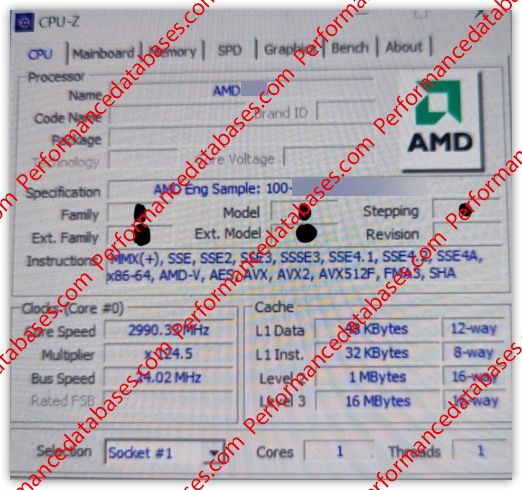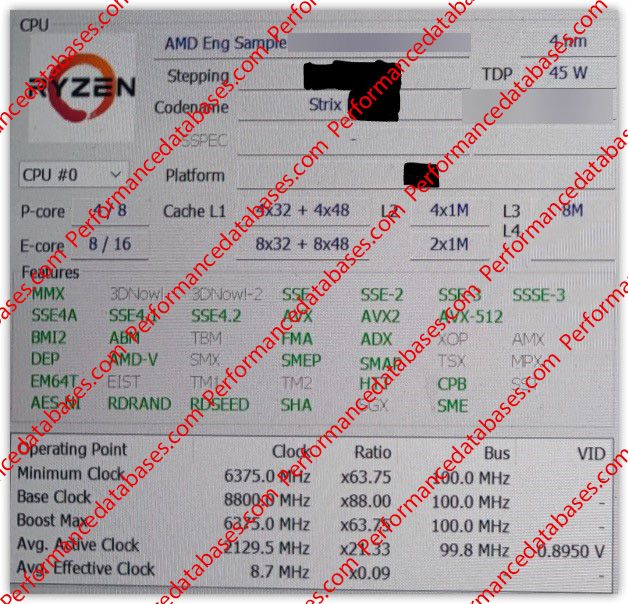PerformanceDatabases.com leaked two photos of the CPU-Z and HWiNFO applications showing the future model AMD APUs Ryzen based on Zen 5 and with a hybrid architecture composed of four high-performance cores and another eight efficient ones.
It has not yet been confirmed which processor model it is exactly, but everything indicates that it will be a processor from the AMD Ryzen 8000 APU series, which will be present mainly in notebooks, mini-PCs and also in desktop computers that do not require a dedicated graphic. We remember that APUs are CPUs that have “powerful” integrated graphics inside.
Diving into the characteristics of the filtered processor, internally AMD is known by the code name “Strix Point”, it uses a manufacturing process 4 nm (we assume from TSMC) and is based on the Big.Little architecture with four high-performance cores and another eight efficient ones. However, and using the data that can be seen in the images, both types of cores use SMT, each providing two threads, so in the end eight threads are provided by the high performance cores and sixteen by the efficient ones.

The SMT theme in AMD’s “Strix Point” APUs contrasts with what is seen with Intel, where Hyper-Threading (the brand’s proprietary SMT implementation) is only present on high-performance cores, if we consider the Big.Little models. This difference may be due to the fact that while high-performance cores are based on Zen 5, they can be efficient on the Zen5c architecturewhich has not yet been officially introduced.
“Strix Point” has 48 KB L1 cache, 32 KB L1 instruction cache, 4 MB L2 per high performance core, 2 MB L2 per efficient core and 8 MB L3 total. As regards integrated graphicsconsists of 16 computing units (CUs) capable of reaching 1,024 shaders and is based on the RDNA 3.5 architecture. The registered TDP is 45 watts.

While the leaked photos on PerformanceDatabases.com provide a lot of data, there are some that are more than 99% likely to be wrong, such as the 8800MHz base frequency. This may be because HWiNFO would not correctly detect a processor model that has not yet been commercialized.
“Strix Point” should see the light of day during 2024 to compete with Intel’s Arrow Lake and possibly Lunar Lake generations if predictions come true. We’ll see if Zen 5 ends up being a significant improvement over previous generations, and if the integrated graphics represent a significant improvement, especially when it outperforms the Radeon 780M by 42% on paper.















